The Old Lock & Dam System On The Kanawha 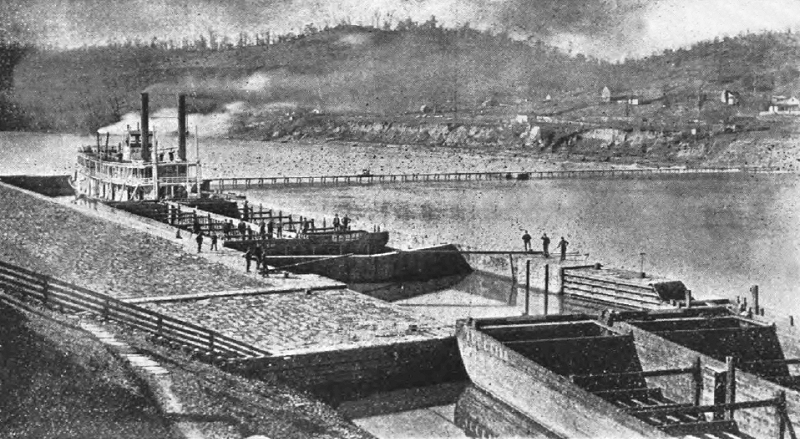
The
photo above is Lock 6, still locally famous today for it's pier fishing
and Marina. Lock 6 is located between South Charleston and North
Charleston. Here you see North Charleston to the right in the
photo.
In 1819, the steamboat Robert Thompson ascended the Kanawha River for the
purpose of ascertaining whether it was navigational to Charleston. The voayage
continued as far as Red House Shoals, in present-day Putnam County, where two
days were spent in a vain effort to pass the rapids, and the boat returned to
the Ohio; the officers reported to the Virginia Assembly the result of the
experimental voyage, and that body in 1820, made the first appropriation for the
improvement of the river. Before the first lock system was completed in 1898, the river had ten separate
rapids or shoals between Charleston and Point Pleasant. They were all well-known
to river men but still caused numerous wrecks, often resulting in the loss of
lives and cargoes. Johnson Shoals at Scary Creek and Red House Shoals between
present Red House and Winfield were the most treacherous.
In 1820, the Albert Donnally, built for salt
manufacturers located along the Kanawha Saltines, ascended to Charleston and
the traffic by river thereafter steadily increased.
Following the
creation of West Virginia in 1863, the State took charge of the Kanawha River
and created a Kanawha board to carry on this improvement and collect tolls as
the James River and Kanawha Company had been doing. It was not until 1870 that
work was begun on a regular system of locks and dams upon action of Congress.
Between 1875 and 1898, ten low-lift wicket dams with single-lock chambers were built on
the river by the federal government. The first two units of this system were the first
movable wicket dams completed in the United States, and when the system was completed,
the Kanawha was the nation’s first river to be completely canalized with wicket dams.
This system was were replaced in the
early-1930s by the U.S. Army Corps of Engineers with four high lift dams with
German roller gates.
*Moveable wicket dams* were invented by Jacques Chanoine of the French
Corps of Engineers, in 1852. His design was modified by the U.S. Army Corps of
Engineers to serve the needs of Ohio and Kanawah river
navigation.
Chanoine wickets are timbers bolted together that somewhat
resembled huge wooden ironing boards laid flat against masonry foundations at
high water which left an open channel for navigation. They could be raised on end
at low water to form a dam. Each dam actually consists of a row of 300 or more
little dams, individually hinged to a foundation on the river bottom. The
wickets are constructed of heavy timber about 4 feet wide and up to 20 feet
long. Raising or lowering the wickets is done by a crew on a maneuver boat that
moves along the upstream face of the dam. A bar is connected to the back of each
wicket with the free end riding in a groove in the foundation. To raise them, a
grapple hooks a wicket and pulls it from the bed of the river. The bar slides up
the groove to a niche, where it catches and supports the wicket upright against
the flow of the river. |
THIS IS THE TYPE USED ON THE KANAWHA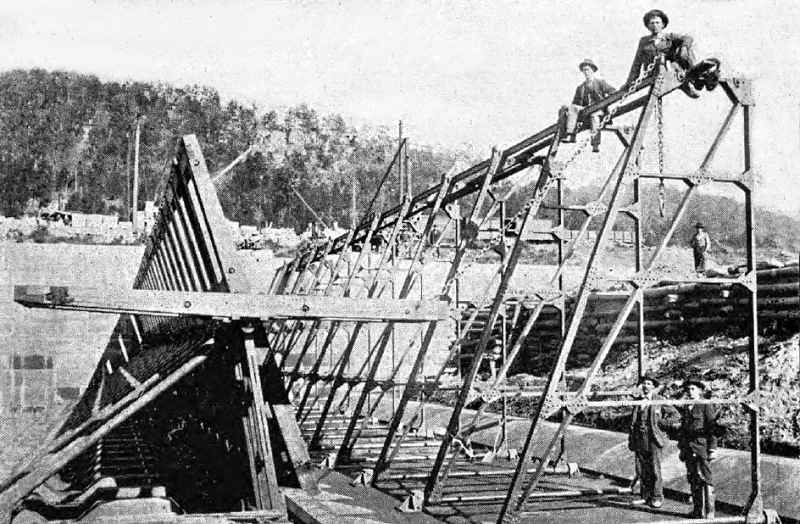
This Wicket is being built on the Kanawha River, and is most likely Lock 6. 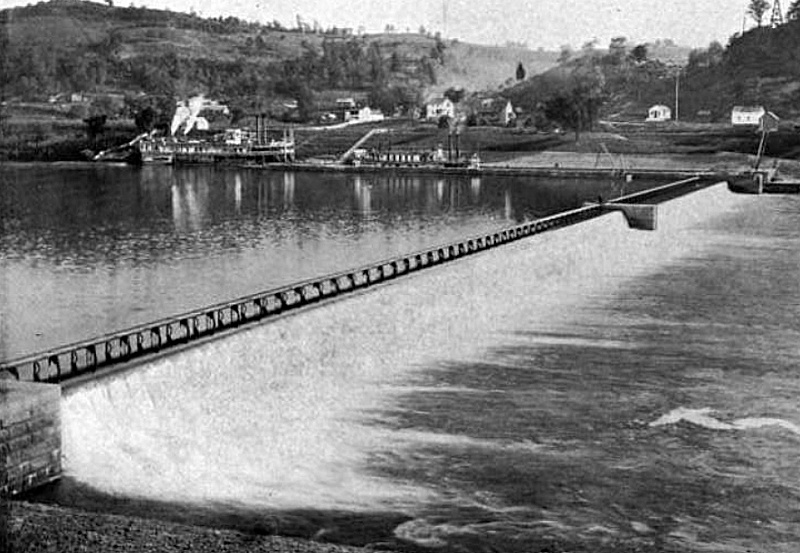  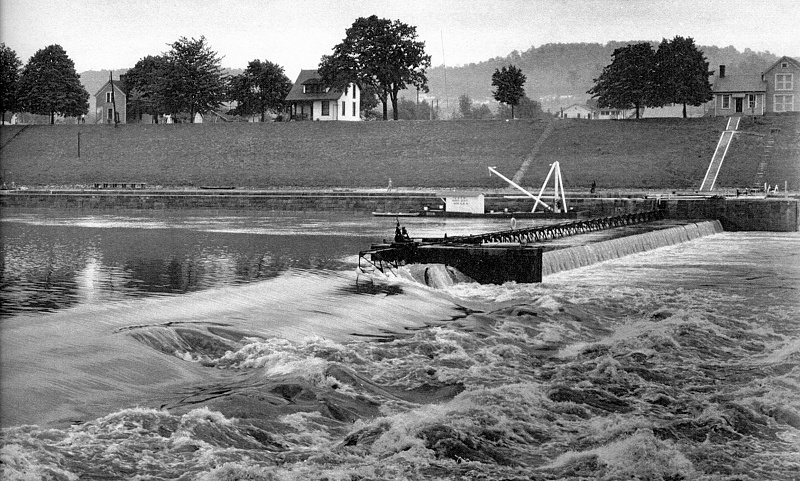 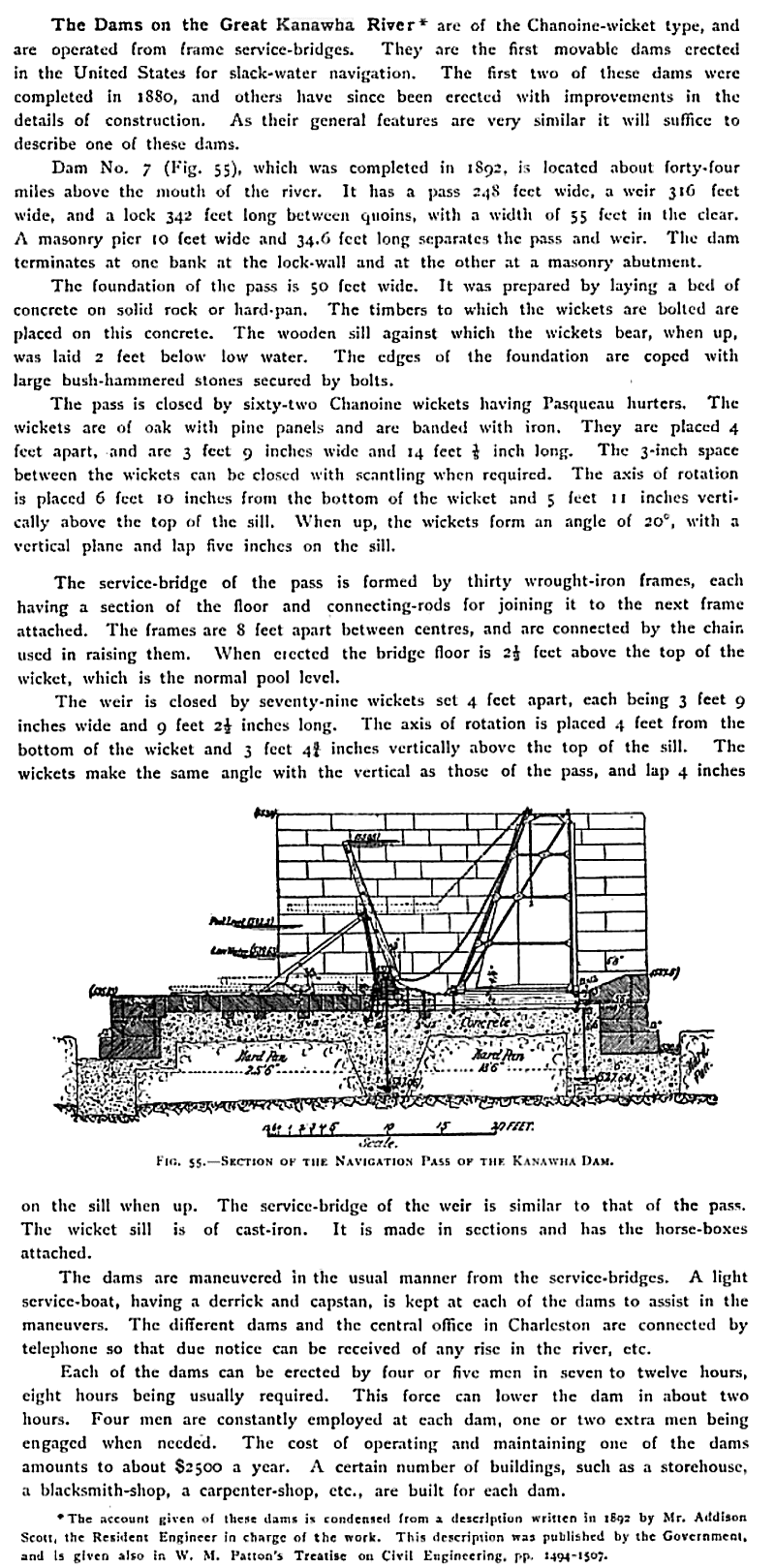 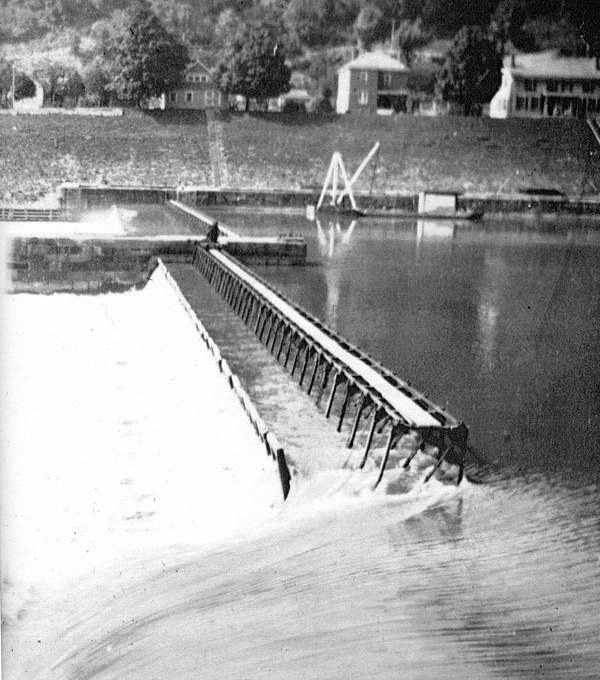
Lock 6 was in North/South Charleston, where the Marina is today.
Lock 7 was near the mouth of the Coal River. ..... 1898
Lock 8 was 4 miles above Winfield...................... 1898
Lock 9 was near Frasier's Bottom. ........................1893
Lock 10 was 2 1/2 miles below Buffalo..................1893
Lock 11 was near Point Pleasant.
The
Elk River had a single lock and dam, built approximately two miles
above its junction with the Kanawha in 1848. This structure was removed
in 1881. Beginning in 1855, eight locks and dams were built on the Coal
River, another Kanawha tributary, and a single lock and dam was built
on the Little Coal River. More than a half-million tons of cannel coal
was shipped on the Coal River before and shortly after the Civil War.
The system was abandoned in 1882. |
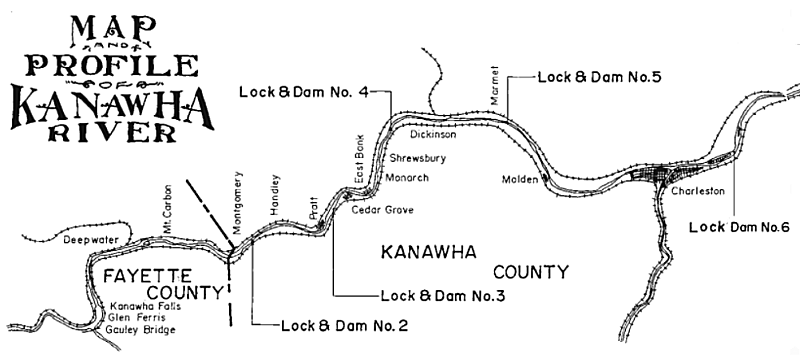
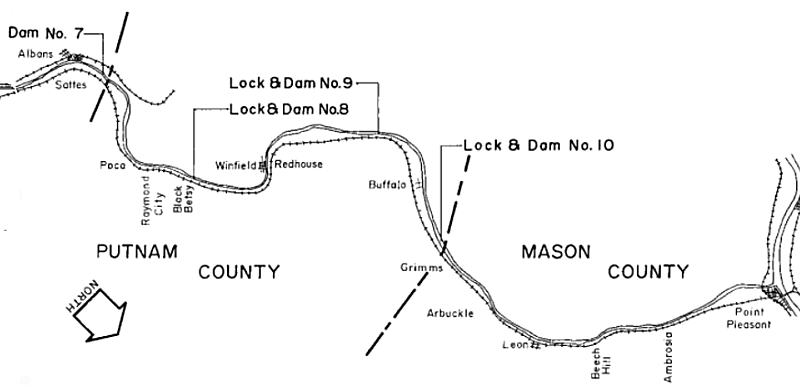
William Price Craighill (July 1, 1833 – January 18, 1909) was born in
Charles Town, Virginia (now West Virginia). He was an author, Union Army
engineer in the American Civil War, and later served as Chief of
Engineers.
A classmate of Philip Sheridan, John Bell Hood, and James B. McPherson,
he ranked second in the United States Military Academy class of 1853 and was
commissioned in the United States Army Corps of Engineers.
When the Corps began to build locks and dams on the Kanawha River in
West Virginia in 1875, Craighill assumed charge there as well. He completed the
first of the moveable wicket dams built in the United States, after visiting
France to study their use.
He died in Charles Town, West Virginia.
Burial: Zion Episcopal Churchyard , Charles Town Jefferson County West
Virginia, USA [unmarked]
|
Back to Index
|









